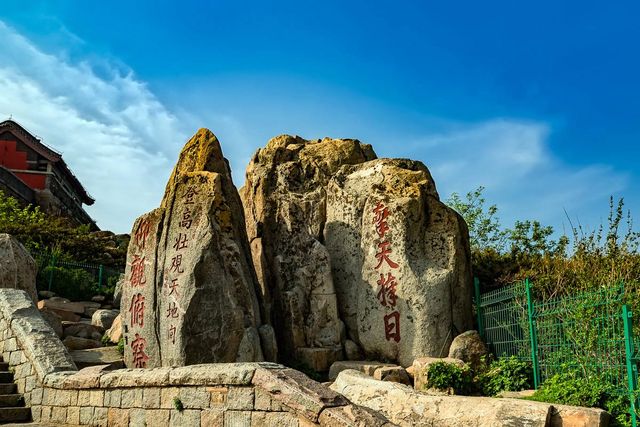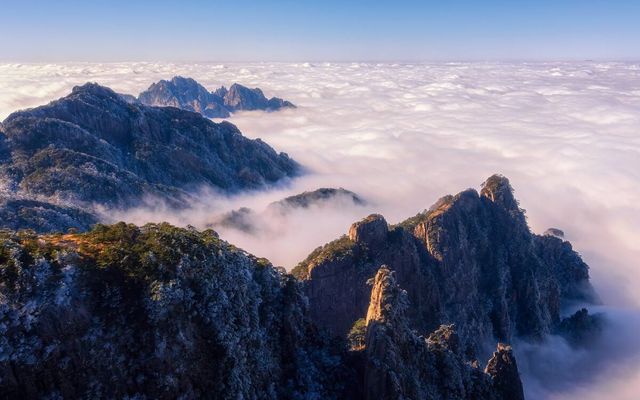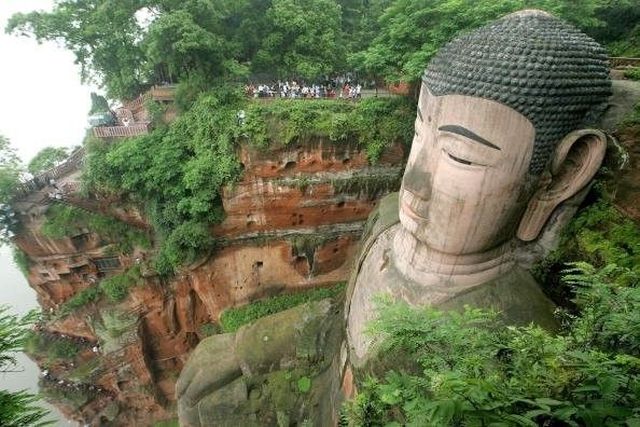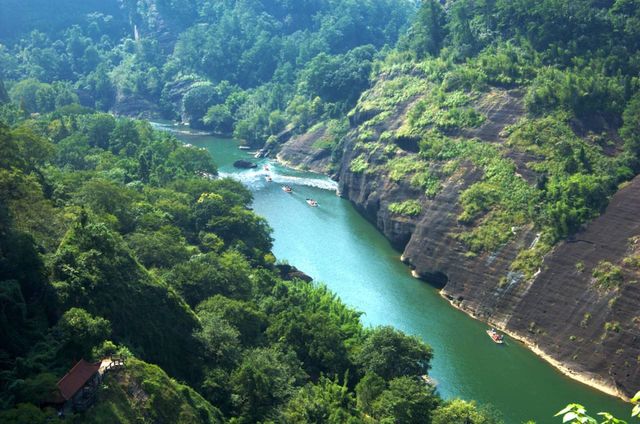The dual heritage of world culture and nature, also known as compound heritage, is one with both natural heritage and cultural heritage. Mount Tai is the first natural and cultural heritage in China and the world. As of July 6, 2019, there are four world cultural and natural heritage sites in China, namely: Huangshan Mountain, Taishan Mountain, Mount Emei and Leshan Giant Buddha, and Mount Wuyi.
See Also: 10 Most Beautiful Famous Mountains in China
1. Mount Taishan

Mount Tai was regarded by the ancients as the heaven of “straight to the throne”, and became the sacred mountain worshipped by the people and the emperors. There is a saying that “Mount Tai is safe and the whole world is safe”. From the first Emperor of Qin Dynasty to the Qing Dynasty, there were 13 generations of emperors who made pilgrimages to Mount Tai, and another 24 generations of emperors sent officials to make pilgrimages 72 times.
The vast mountain of Mount Tai contains more than 20 ancient buildings and 2,200 stone tablets. Taoism and Buddhism regard Mount Tai as the “Immortal Mountain and Buddhist kingdom”, deify Mount Tai, and build a large number of temple in Mount Tai.
Mount Tai is the symbol of the Chinese nation, the epitome of Eastern culture, the place where the thought of “unity of nature and man” is placed, and the homeland of the Chinese nation spirit.
2. Mount Huang

Mount Huang is located in the south of Anhui Province, Huangshan City, there are 72 peaks, the main peak Lotus peak 1864 meters above sea level, and Guangming peak, Tiandu Peak said the three main peaks of Mount Huang, as one of the 36 peaks. Huangshan, the symbol of Anhui tourism, is the only mountain scenery among the top ten scenic spots in China.
Mount Huang, formerly known as black mountain, is famous for its black peak and black sky. After the legend Xuan Yuan Yellow Emperor had alchemy in this, it was renamed “Huangshan”. Huangshan represents the landscape has “four unique three waterfalls”, four unique: odd pine, strange rocks, sea of clouds, hot springs; Three waterfalls: Herringbone waterfall, Baizhang Spring, Kowloon Waterfall. Huangshan Greeting pine is a symbol of Anhui people’s hospitality and friendship, carrying the Oriental etiquette culture of embracing the world.
When Xu Xiake, a traveler of the Ming Dynasty, climbed the Huangshan Mountain, he said: “There is no Huangshan mountain like the emblem among the famous mountains in and around the thin sea. When you climb Mount Huangshan, this is the only view!” Was later extended as “the return of the five mountains do not see the mountain, the return of the Huangshan do not see the mountain”.
3. Mount Emei – Leshan Giant Buddha

Rising from the Emei Plain, the mountain extends north and south for 23 kilometers, covering an area of about 154 square kilometers. It is mainly composed of four peaks: Da ‘e Mountain, Er ‘e Mountain, SAN ‘e Mountain and Si ‘e Mountain. The middle and lower parts of the mountain are distributed with granite, metamorphic rocks and limestone, and the top part is covered with basalt.
Mount Emei is located in the intersection of various natural elements. It has a complex floristic composition, rich biological species and many unique species. It has a complete subtropical vegetation system, with more than 3,200 plants, accounting for about 1/10 of the total plant species in China. Mount Emei is also home to more than 2,300 species of rare animals. There are more monkeys along the mountain road, often in droves to beg for food to visitors, as a major feature of the mountain.
Mount Emei is the ashlair of Puxian Bodhisattva. Religious culture, especially Buddhist culture, constitutes the main part of the history and culture of Mount Emei. All the buildings, statues, rituals, music and paintings show the rich flavor of religious culture. There are many historic sites and temples on the mountain, including Baoguo Temple, Fuhu Temple, Washing Elephant Pond, Longmen Cave, Sashimi Cliff, Emei Buddha’s Light and other scenic spots. It is one of the destinations for tourism, recuperation and summer vacation in China.
4. The wuyi mountain

Mount Wuyi is a famous mountain with three religions. Since the Qin and Han DYNASTIES, Mount WuYI HAS BEEN THE home OF Yu Yu’s Buddhist family, and there are many Buddhist temples, MONasteries AND BUDDHIST nunNERies. Mount Wuyi was once a place where Confucian scholars advocated Taoism and gave lectures.
Wuyi Mountain Nature Reserve is the best protected and richest ecosystem in the same latitude area of the earth, with 2,527 species of plant species and nearly 5,000 species of wild animals.